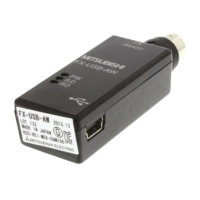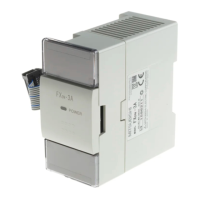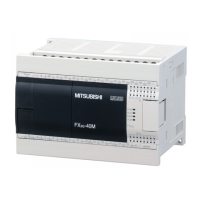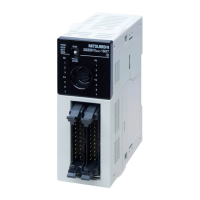Servo Amplifier and Servo Motor Components of Positioning Control and their Roles
FX Positioning Control Systems 3 - 9
3.2.3 Servo lock function
The servo motor is controlled so that the accumulated pulse quantity counted in the deviation
counter becomes 0.
For example, if an external force for forward rotation is applied on the servo motor, the servo motor
performs the reverse rotation operation to eliminate the accumulated pulses.
3.2.4 Regenerative brake function
During deceleration, because the servo motor rotates by the load inertia of the drive mechanism, it
functions as a generator and electric power returns to the servo amplifier.
The regenerative resistor absorbs this electric power and functions as a brake (called a regenerative
brake.)
A regenerative brake is required to prevent regenerative over voltage in the servo amplifier when the
load inertia is large and operations are frequently performed.
The regenerative resistor is required when the regenerative power generation quantity during
deceleration exceeds the allowable regenerative electric power of the servo amplifier.
Accumulated pulses in deviation counter Servo motor
Minus pulses Reverse rotation operation
Plus pulses Forward rotation operation
0 (zero) Stop
Tab. 3-1:
Control of servo motor by accumulated pulses
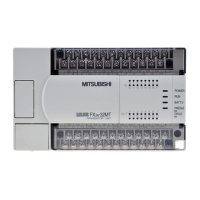
